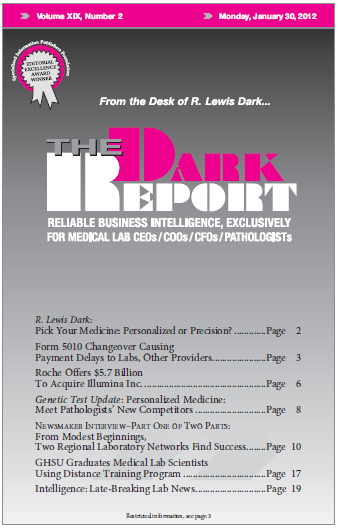“For 20 years, our regional laboratory network here in Detroit has played an important role in helping member hospital laboratories build their lab outreach programs.” —Jack Shaw, Executive Director, Joint Venture Hospital Laboratories CEO Summary: During the 1990s, hospital laboratories in Detroit, Michigan (1992), and Seattle, Washington (1996), banded together to form regional laboratory networks. […]
To access this post, you must purchase The Dark Report.


